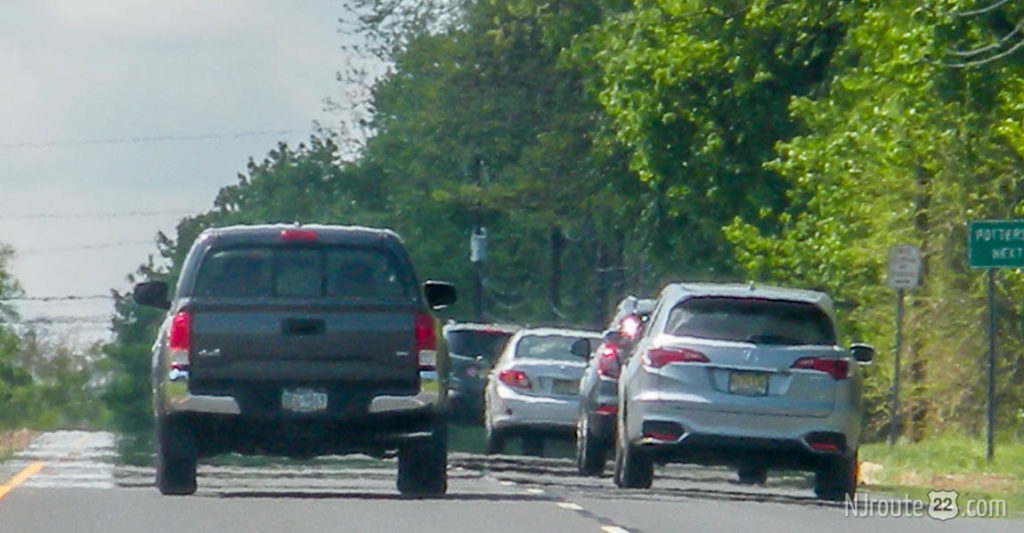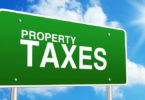Economic health of Route 22 (and beyond?)
If you travel the entire length of Route 22 in New Jersey, you’ll see a wide disparity of economic conditions. Quite fascinating, in fact.
This holds true for pretty much any stretch in America. Some areas seem “bustling,” while others appear “blighted” with little to no energy or growth (or health).
What are some of the (many) reasons for such vast differences in what is the 4th smallest (but most dense) state in the country?
We’ll try to sort out what is going on – and what can be done to improve it.
Many factors play into the economic health
In our opinion – many items contribute to the economy of a particular area. Route 22 (and the surrounding region) seem to have several factors that play into whether the area can be considered successful or not. Some are obvious – and others are not quite so clear for the average person to recognize.
Those are:
- Population density and demographics
- Distance from population centers and roads (ease of access)
- Jobs (current economic conditions)
- Commercial anchors
- Local politics and regulations
- Overall economic conditions
- Societal trends
While most of these aspects are fairly straightforward, as in it is considered “basic math” (or common sense) to some degree, others are not quite so simple to put together.
(Note that we crafted this article in one evening, and are basing it on individual observations, personal life experience, and long-term trends).
Let’s chime in on each of these conditions that can help or hurt each local community.
Population Density and Demographics
Probably the most influential factor in determining the economic state of a given geographic area is the population density, shortly followed by the demographics.
The eastern third of Route 22 is a commercial zoo. For the most part, thanks to a much higher population density – many more businesses have the potential to survive. For the simple fact that hundreds of thousands more people live in the vicinity.
Some spots in the central and western parts of Route 22 are significantly less populated – thus the “need” for as many businesses is not necessary, nor would it be sustainable if the same number of stores existed. They just wouldn’t survive.
Demographics and economic buying power play a role – but primarily when it comes to the TYPE of businesses you’ll see. They’ll be less Crate & Barrel and other high-end type stores in areas with less disposable income, and more “dollar stores” in those regions that have lower-income residents. Basic economics, really.
Distance from population Centers (and roads)
The 20-mile zone around Union, NJ for instance, is highly populated. Thus, almost any place around here you open a business – will already have a massive number of potential customers that are not far from you.
People coming and going from all directions at all times. Just a little bit of marketing and good visibility, and most of your work is done.
As you head further west – you distance yourself from the “hot spots” and activity is drastically diminished. You better have a unique (and desired) business – or you’re going to be in trouble.
We believe this is why business turnover is much higher in areas with less traffic. Very unforgiving (just ask the folks at Homestead Butcher Shop in Lebanon that lasted less than a year.)
Jobs
And by jobs, we don’t just mean the retail stores – but other large corporations and offices as well. An area doesn’t need to be a zoo-like some spots on Route 22 to be “viable.”
Just a couple of major job centers can mean significant area business (like when Merck was in Readington – and they lost 4,000 customers when they closed up shop). This is why cities compete to get businesses like Amazon to come.
Some businesses often try their luck just based on the “potential” customers they can have. “Hey, let’s open a sandwich shop right near this office building!”
Commercial anchors (can help?)
Often times, when a well-known and popular major business opens in some areas – this can create a slight economic boom. As in other shops try to “bottom feed” off the increased traffic and visibility. Works sometimes, sometimes it doesn’t.
Stuck in the mud: Local politics, laws, and regulations
This is a big wild card. The willingness of local politicians to be amicable to new businesses. I should add that the local residents (i.e., political constituents) also can literally make or break whether an area is receptive to it.
There are some communities along Route 22 – that appear to be more difficult to do business in than others. And you can see that over time, how very little changes, as if there is a roadblock in the way.
And it all depends on the current state of politicians as well as local political “Activists” who may be against change (i.e., “NOT IN MY BACKYARD!”)
Many individual localities have particular zoning and commercial laws that they strictly uphold. Such as aesthetics and commercial signage. Which, from a big-picture perspective – are often either outdated or too restrictive. However, you know the phrase “give them an inch…”
And of course – corruption unfortunately almost always leads to despair. The greed of politicians – especially if left unchecked (or undiscovered) for long periods – will destroy cities. This is why you see the endless cycle of poor cities that are seemingly always on the precipice of “economic revitalization” – but never EVER achieve it.
Every so often a poster-boy politician gets locked up, but most get away with their theft because it’s way too rampant – and every bobble-head politician has something to lose. So it continues. Shhh!
It appears that other than political “groupies,” most city residents are essentially clueless when it comes down to knowing what is “bubbling” within their local city hall chambers.
Overall Economic Conditions
While not as direct and impactful as the will (or ill will) of local politicians, the general economic conditions of the country and state still play a role.
The unemployment rate (or just the types of jobs people have – corporate, service industry, full-time, part-time, etc.) influences the overall spending power of a geographic area.
If jobs and collective disposable income goes down – so do many businesses – who were barely scraping by to begin with. Kind of scary to think, right? Like the stupid headlines seem to repeat month after month: “70% of Americans are one missed paycheck from despair!”
Societal trends affect brick & mortar (i.e., internet)
Without a doubt, general trends in consumer behavior affect the entire country. Fact of life. That explains why no one is buying Beatles or Beastie Boys “CD’s” anymore.
Many brick & mortar stores got killed by the likes of Amazon.com or even entertainment venues that were once popular.
People seem to be staying home a lot more (i.e., binge-watching or other online activities like video games).
So staying on top of trends (preferably before everyone is doing it) is paramount for any small business owner.
Smart Development
Some communities severely limit what can be built (homes, businesses), while others seem to be over-zealous when it comes to “packing them in.” Each with their own set of downsides. This is a relatively difficult topic to address in general – because each city is unique with its own set of bullshit.
Cities are like businesses, and they love filling their coffers. Which makes adding both residents as well as more businesses “economically appealing” for many politicians. At least during the “pie in the sky promises” stages.
However, downsides come with excess density and poor planning. Cities that overdevelop, or lack a sensible vision are often left with “blighted” areas. The economy plays a big role too – when major economic centers (such as Phillipsburg Mall) look like ghost towns compared to their hey-days because of the vacancies. A trickle effect.
To be fair – sudden economic changes can affect even previously successful developments. Sometimes luck and timing are involved.
Developing smarter is usually the best choice. Finding that “just right” mixture of activity. Also working together with neighboring towns helps build continuity. True “sustainability.” You can see some areas in NJ where the differences between community visions are clearly obvious.
And some areas aren’t very careful over the long-term when it comes to any population changes. A large up-tick usually requires larger budgets (for police, fire – along with their pensions), which inevitably leads to property tax problems. The same holds true for larger cities that suffer a reduction in tax revenue. They’re often left holding big bags of retirement obligations, and cities can fall into disrepair.
Has New Jersey growth maxed out? Now what?
- In 1900, NJ had about 2 million residents.
- By 1940, the population had doubled to about 4 million.
- Between 1940-1970 (30 “boom” years), the population increases to 7 million (3 million more)
- And between 1970-2020 (50 years), only 2 million new residents (approx. 9 million total)
New Jersey seems to be near its physical limit. Growth has come to a standstill, relatively speaking. It is highly doubtful the state will ever see double-digit growth ever again.
There is literally no room left to add many more people (other than small “pockets” of areas that can support it). Most rural areas have moratoriums or regulations against increased density, as well as NJ Farmland Preservation that preserves whatever little open space is left in the state. That’s not to say people are not trying to pack more housing in.
Other major cities are going “up,” adding high-rises as that is the only direction left (like Manhattan).
But what about exodus?
Because of the increasing taxes, it has been said that both wealthy residents and some big businesses leave the state for better economic climates. While NJ is in a prime location due to proximity to NYC, that doesn’t stop some from “finding better pastures.”
Conclusion: Anyone’s guess!
Frankly – we think every “area” in the world has its own set of “circumstances.” As much as we (collectively) try to analyze the “why” things take place, most of it can just be boiled down to “it is what it is.”
Not everything in the world can be explained or repaired. This is the human condition.
Politicians and activists – it doesn’t matter. Each and every INDIVIDUAL contributes to what makes things work or fail.
Recall all the things in your life that “sounded awesome on paper,” but eventually went away.
While we all have profound ideas and solutions to “fix” what is wrong in this world – we do not have crystal balls.
What works or doesn’t most often needs time and experience to pan out. And sadly enough – that doesn’t mean what worked in spot A – will work in spot B.
The most important thing anyone can do – is ADAPT to what is happening around you, instead of trying to force some “once upon a time” formula – as compelling as it may sound.












